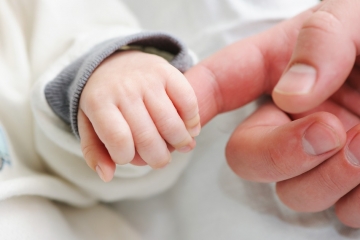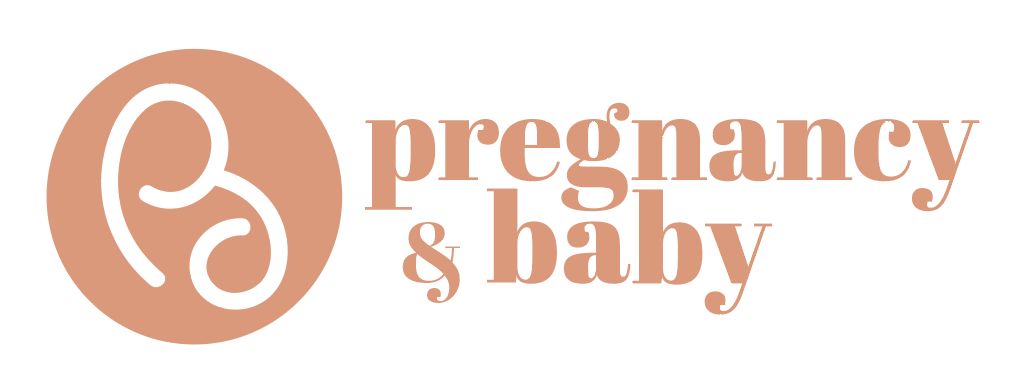
 This One Decision Could Safeguard Your Baby’s Future
This One Decision Could Safeguard Your Baby’s Future  A Guide to Family Cord Blood Banking
A Guide to Family Cord Blood Banking  Every 5 minutes a baby’s life is protected forever
Every 5 minutes a baby’s life is protected forever  Can I prepare myself for a drug-free labour?
Can I prepare myself for a drug-free labour? 
Do you recall the first time you heard the term “episiotomy”? And what was your reaction to it? If your feelings included shock, fright, anxiety and even outrage, don’t worry as you’re not alone. Having less uncertainty over the procedure is the first step about overcoming any fears.
First of all, however, what is an episiotomy? The root word, “episio”, stands for vulva, while “tomy” means an incision or sectioning. In other words, this procedure describes a surgical incision to the area of skin between the vagina and anus (also called the perineum), and it is done during vaginal delivery in order to help enlarge the birth canal and facilitate the exit of the baby’s head as it crowns.
No matter which way you look at it, an episiotomy—commonly referred to as “the cut”—seems hardly routine, though in some countries like Taiwan, the rate is close to 100 percent of all live births. It remains a controversial topic: advocates of drug-free labour and delivery have even referred to this as a savage practice, while those in the field of modern medicine might consider it a necessity.
The benefits of an episiotomy are said to:
Continue on next page...
Despite these claims, an episiotomy can certainly sound scary, unnatural and downright painful to the uninitiated. The thought of a pair of surgical scissors making a snip into the delicate skin folds of your privates is almost too much to bear. In Singapore, the procedure is actually more common than exceptional, and the reason for this is mainly ethnic: it is thought that the perineal area of Asian women has less allowance to be stretched, which elevates the risk of making a tear that extends into the anus as the baby is being pushed out. This could in turn heighten the risk of infection, or affect bowel movements if the rectal tissues and anal sphincter muscle are torn.

Experiencing the cut
You may have heard that if you’ve had an episiotomy before, especially for your first birth, you may not need to have the cut for subsequent deliveries. This however, is subjective, and can also depend on the hospital you are in, as well as your obstetrician who will assess the conditions of your labour before making the decision.
Take myself, for example. I’ve delivered two children naturally, and both times, I’ve have an episiotomy. I had an epidural (anaesthetic administered via the spinal cord) during my first delivery, which lasted 16 hours, and during the final stage of pushing, I was so mentally and physically spent that nothing really mattered to me then, other than just getting my baby out. The epidural had greatly numbed the lower half of my body, which on hindsight was both good and bad. The bad: I was simply pushing blindly; bearing downwards whenever the midwife instructed me to, but the problem was that I had little to no physical sensation at that point (which is one of the side-effects of an epidural).
As to the upside, you would’ve guessed by now: the cut, when it happened, was an anti-climax as I didn’t feel a thing. I certainly didn’t do myself any favours when I actually saw the doctor take up the pair of scissors—for a moment, I briefly panicked and felt a sense of helpless desperation and horror. And then, it was over. The next thing I knew, my baby had been delivered, and a doctor was stitching me up. I learned that he had injected the perineal area with some local anaesthetic to numb it further, but there was no pain even then, just a weird sensation of a slender thread running in and out of the skin.
I recovered nicely too. In less than two weeks in fact. Thankfully there was minimal pain, just some discomfort of feeling sore and bruised down below; but there was no infection or complications, and my stitches naturally dissolved into my body as the wound healed.
As to why I endured the cut again for my second delivery, I wouldn’t be able to tell you for sure. In fact, I could swear I was having it easier: within four hours, I had pushed her out, and the labour was so hard and fast that there wasn’t any time for any pain-relief drugs to be given apart from gas (which I soon declined as it made me feel woozy). Again, I didn’t feel the cut as it happened (luckily I was spared the sight of anything sharp near my nether region), but I remember that being stitched back together was unpleasant this time round. I know I kept whining for more LA to be injected as I was feeling “it”. For that reason, I wasn’t keeping still either, but squirming more than necessary. I’m no medical expert, but that could be the likely cause why my recovery also took longer than I expected. I was extremely tender down there, and when the sutures broke down, I discovered that the skin had healed in a lumpy manner.
I eventually healed of course, as all wounds get better. As far as experiences go, this would definitely not make a bucket list of must-dos! I’m neither for nor against having an episiotomy, but since it’s such a common procedure here in Singapore, it’s always better to go in prepared. Getting extreme views will also tend to swing you in one direction or the other.
Continue on next page...
Pressing concerns
Upon going home with your newborn baby, it can seem a pretty miserable affair. You will no doubt still be feeling pain or discomfort from having had the cut (if you’ve endured one) and going to the bathroom will be an initial drag. Don’t worry, as this does get better. Believe me, our spouses have no idea what we go through: we are still bleeding after-birth discharge and have to gingerly peel the surface of the pad off the wound, while rinsing it and patting it dry to keep it clean. I was also given a bottle of iodine to apply several times a day on the wound, while helps without the sting of rubbing alcohol. You can try using witch hazel too, soaked in a cotton pad (get yours from a pharmacy and make sure it is pure witch hazel without any other ingredients, which are commonly added when it is sold as a facial astringent).
I’ve heard of some women being so afraid of passing motion for fear they would end up tearing themselves or rupturing their stitches. However, a normal dump presents no risk as long as you are not straining very hard or over an extended period. For that reason, some doctors will provide you with stool softeners as well, to accommodate bowel movements. My advice: if you feel the urge, just go ahead... fight the fear! The stitches are certainly strong enough to withstand this form of pressure, and adding constipation to your list of woes is not ideal during what will be an initially challenging few days for some new mothers especially.

How about sexual relations?
A natural question too, although that might be the last thing on some moms’ minds, especially with a newborn to fuss over! Most women would choose to wait until their bleeding stops, which is between four to six weeks postpartum; by then your incision wound would have healed as well, although you may still feel a little tender. My advice is to take things slow—intimacy can be expressed in other ways other than penetrative sex. If things progress to that stage however, it always helps to have lots of foreplay to ensure you’re sufficiently aroused; a tube of lube will aid things too. Also, try not to overly fret about being too “loose” down below or over your post-delivery physique. Our spouses are usually more forgiving and more ready to please than we give them credit for. Sex can be just as good, even before baby: a strategically-placed cushion here, or even a vibrator there, can put both of you in an explorative mood again, just like in courtship days. Remember too, that your vagina is like a muscle… the more you use it, the stronger it gets! As the saying goes, use it—or lo[o]se it! (In this case, both identically-sounding words fit the bill!)
Taking care of the wound
“During the first postnatal days, the perineum will be bruised, swollen and sore. Sometimes when you pass urine, you may feel a stinging pain on the wound. To reduce this effect, pour cool water on the area as you pass urine so that the water will dilute the stinging effects of the urine,” advises Cecilia Koh, a registered nurse and midwife with more than 30 years’ on-the-job experience.
Cecilia suggests reducing swelling by soaking the perineum in cool salt water for about five to 10 minutes daily, or until the wound has healed. For this, you may purchase a sitz bath at your hospital pharmacy. “Hot water will increase blood flow to the area which may make it more painful later,” she says. “Keep the area as clean and dry as possible by changing your sanitary pad regularly. Some women may prefer using sanitary towels with loops as these can provide some counter pressure on the wound therefore making it less painful.”
Contrary to popular advice, midwife Cecilia does not advise using feminine sprays or powder as these products may interfere with healing. Also, she is not keen on inflatable air rings either. “It does give relief when you sit but it may restrict blood flow to the area if used too long, which may delay healing of the episiotomy,” she points out. “It is better to sit on a soft pillow instead.”
Here are other methods which will definitely help ease your discomfort and promote faster recovery:
For more updates on all things pregnancy, LIKE US on Facebook!
Copyrighted Pregnancy & Baby by Mummys Market 2019


